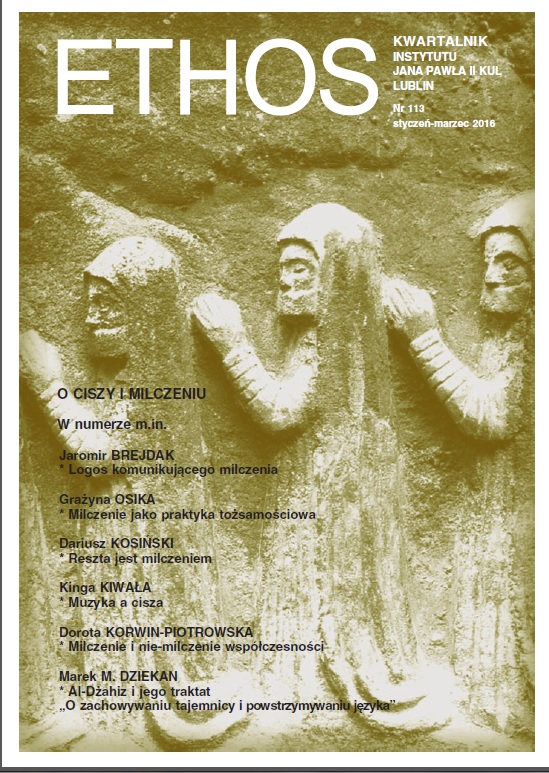Milczenie i metafora. O przenośni w dwóch tekstach Norwida o Chopinie
Silence and Metaphor: On the Imagery in Norwid’s Two Texts on Chopin
Author(s): Łukasz NiewczasContributor(s): Dorota Chabrajska (Translator)
Subject(s): Poetry, Polish Literature, 19th Century
Published by: Katolicki Uniwersytet Lubelski Jana Pawła II - Instytut Jana Pawła II, Wydział Filozofii
Keywords: Norwid; silence; metaphor; imagery; Chopin; Chopin’s Grand Piano; the Nekrolog [“Obituary”] of Chopin;
Summary/Abstract: The author notes that despite the abundant literary criticism on Norwid’s treatment of the issues of silence and not speaking the analysis of the formal, textual means he used in order to evoke silence in his poetry is rather sparse. Thus the article focuses on a discussion of the specific Norwidian imagery which the poet employed to articulate silence and not speaking. The paper comprises a presentation of the poetics of the metaphor of silence in the two pieces Norwid devoted to Frédéric Chopin, namely his Nekrolog [“Obituary”], which is a necrology written, in prose, after the composer’s death, and the famous poem Chopin’s Grand Piano. Both texts are similar in that their meaning is metaphor based. However, the construction of the imagery is governed by a different poetics in the case of each text. The vivid, emphatic and strongly conventionalized imagery of the Nekrolog is contrasted with the discrete, subtle, and ephemeral imagery of Chopin’s Grand Piano, the latter considered by the author of the article as exhibiting an absolutely original approach to poetry in the mid- and late 19th century. The ‘silent,’ or rather ‘invisible,’ imagery used in Norwid in Chopin’s Grand Piano is representative of his mature works (in particular those included in the volume entitled Vade-mecum), and as such constitutes the main element of his poetic idiom.
Journal: Ethos. Kwartalnik Instytutu Jana Pawła II KUL
- Issue Year: 29/2016
- Issue No: 1
- Page Range: 89-103
- Page Count: 15
- Language: Polish
- Content File-PDF

